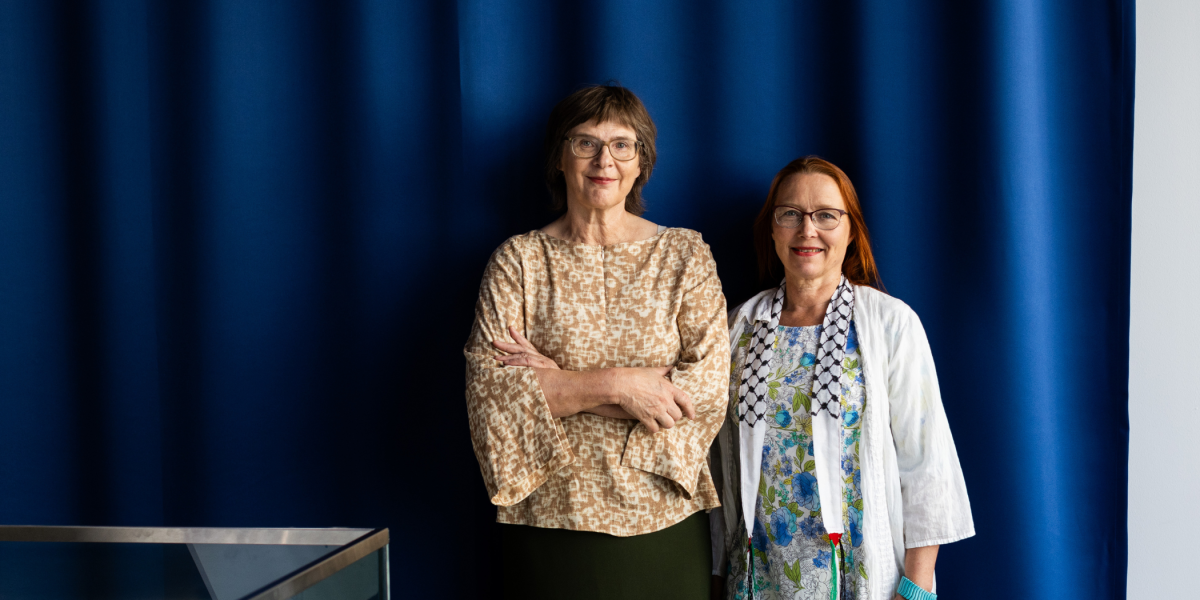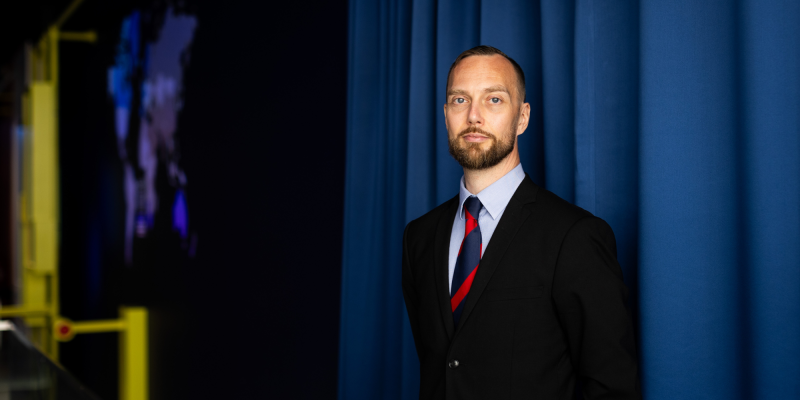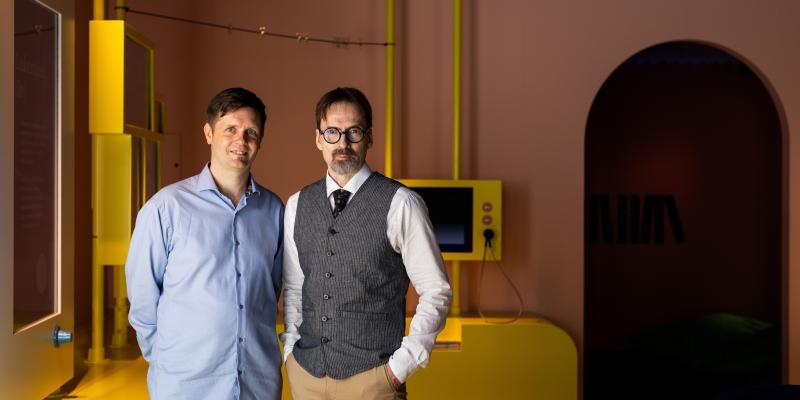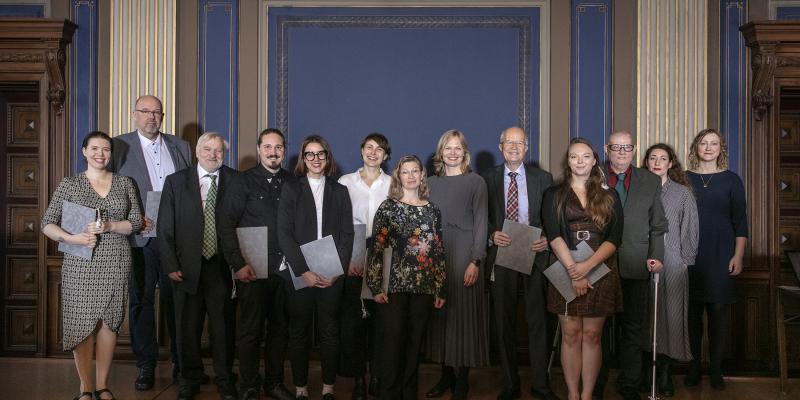
In our series introducing the recipients of the 2024 State Awards, we now feature Ritva Kovalainen and Sanni Seppo with their work on northern boreal forests.
Photographers Ritva Kovalainen and Sanni Seppo have been capturing the Finnish forest for thirty years. This extensive life’s work has resulted in books, exhibitions, and films, most recently the photographic art book Pohjoistuulen metsä (The Forest of the North Wind). For their long-term dedication, the duo was awarded the Finnish State Award for Public Information in 2024.
Pohjoistuulen metsä (2023) concludes a forest-themed non-fiction trilogy, the first parts of which are Puiden kansa (The People of the Trees, 1997) and Metsänhoidollisia toimenpiteitä (Silvicultural Measures, 2009). What has drawn you to forest-related themes?
Ritva Kovalainen: We were both studying at the University of Art and Design Helsinki in the 1980s. After many phases, we realised that forests fascinated us. Forestry was a hot topic at the time. There was talk that Finnish forest management was the best in the world. We were both frustrated that these discussions completely ignored the forest’s significance to Finnish identity. We agreed to do something about the cultural and spiritual meaning of the forest. In my youth, I read a lot of nature books and dreamed that our family would move from our home in Kirkkonummi to Eastern Finland, where there were endless wilderness.
Sanni Seppo: I’m from Joensuu in North Karelia. The forest became a part of my life early on. I played in trees, pretending to be an Indian, embarrassingly long. Now, I try to speak up for urban forests every day. They don’t need to be large, especially for children, but they need to be nearby. The forest is important to my mother. She taught me to pick berries and mushrooms and helped me understand the spiritual significance of the forest. You go to the forest when you're feeling down. The forest has healing power. When I was in high school in the 1970s, our family got a cabin in Ilomantsi. The surrounding forests were magnificent wildernesses. There were no roads, and we had to explore the area with a map and compass. Now almost everything has been logged.
Ritva: The meaning of the forest doesn’t fade even if you work with it for years; in fact, it feels like you need the forest even more. Puiden kansa took us five years to create. We travelled around Finland and explored forest mythology and its mythical side. This naturally led to Metsänhoidollisia toimenpiteitä, which critically examined forest management. That, in turn, inspired Pohjoistuulen metsä, which tells the story of our northern boreal forest. The photos in the book are from protected areas and natural forests. Only a few percent of Finland’s forest area consists of natural forests. Witnessing the changes in the forests has been shocking.
You’ve not only written books but also exhibited your photographs in museums across Finland. What kind of encounters have you had with the public?
Sanni: Puiden kansa received an unexpectedly large response. The exhibition, based on the photographs, toured art museums in probably ten different towns. The guestbooks are incredible treasures. The images touched people, and they left comments. There were more visitors than usual, including those who don’t typically go to museums. The mythology of the forests intrigued people. The exhibition helped them understand why forests and trees are so important to Finns. We have forested roots.
Ritva: While working on Puiden kansa, we encountered a past we had never heard about in school or university. Both Puiden kansa and Metsänhoidollisia toimenpiteitä examined forest issues from a perspective that had rarely been explored before. No one had really worked on how the transformation of the home region affects people. The forest was always discussed from a utilitarian point of view, but the sorrow caused by its change was a taboo.
Sanni: We do talk about the loss of species and biodiversity, but not about the spiritual loss. It’s as if no one has the right to feel a sense of loss. The economic use of forests is regarded as unquestionable and necessary because it provides jobs. Now, we’re facing billion-euro bills for the loss of carbon sinks, which is the fault of the forest industry. It’s crucial to ask who really benefits from forestry.
In Pohjoistuulen metsä: Kuvauksia viimeisistä luonnonmetsistä (The Forest of the North Wind: Depictions of the Last Natural Forests), you visit places like the Värriö Nature Reserve in Lapland, which is only accessible to researchers and reindeer herders. How did you get permission?
Sanni: We were able to participate by joining a research project with forest scientists in the Värriö Nature Reserve. It’s been important for us to get to know forest experts, such as Timo Kuuluvainen, Tuomas Aakala, and Petri Keto-Tokoi. Through them, we’ve learned to understand how drastically, not just visually, natural forests differ from managed forests.
Ritva: We accompanied researchers in Värriö in 2016, 2017, and 2018. We took week-long or ten-day photography trips. We realised that the material we were capturing was worth turning into something bigger. We continued photographing natural forests preserved along the eastern border. This became Pohjoistuulen metsä.
How do you see the potential of art in promoting the condition of forests?
Sanni: Creating art is motivating because we constantly receive very positive feedback from the public. However, the nature-hostile policies of the current government have caused me a personal crisis. I feel somewhat discouraged. I ask myself whether my work has any purpose other than to fill people with sorrow when they realise, through my art, what’s happening to nature.
Ritva: I believe that art never has a direct impact, but it slowly changes thoughts and the world. Many people in the forestry sector have left Virpi Suutari’s film Children of the Boreal Forest in tears. I believe in the power of art. There are many signs that change is possible. For example, rivers are being restored for migratory fish.
Sanni: Art works slowly, yes, but will we destroy everything before it has a chance to make a difference? In Ilomantsi, for example, there’s now a debate about the fate of wetlands, and people are mobilising to oppose projects that would destroy bog ecosystems. I hope their voices are heard, and that activism makes a difference. Nature exploitation is now wrapped in green language, but the destruction continues unless people widely awaken to defend nature.
Text: Helen Partti (in Finnish, translated by Henriikka Mustajoki)
Photo: Usva Torkki
The Ministry of Education and Culture annually grants the State Awards for Public Information based on the recommendations of the Advisory Board for Public Information (TJNK). The award is the nation’s highest recognition for outstanding public dissemination of knowledge.


